This safe nuclear battery could last decades on a single charge
Researchers are always developing better battery technologies, hoping to find ones that last a long time and never need to be recharged—and this month, we have yet another exciting breakthrough. South Korean scientists from the Daegu Gyeongbuk Institute of Science & Technology recently presented a prototype battery that works according to the betavoltaic principle. As the researchers explain: “Nuclear batteries generate power by harnessing high-energy particles emitted by radioactive materials. Not all radioactive elements emit radiation that’s damaging to living organisms, and some radiation can be blocked by certain materials. For example, beta particles (also known as beta rays) can be shielded with a thin sheet of aluminum, making betavoltaics a potentially safe choice for nuclear batteries.” This betavoltaic battery prototype is based on carbon-14, an unstable and radioactive form of carbon called radiocarbon. Although this carbon isotope is radioactive, it only produces beta radiation, which can be easily shielded to prevent harm. Radiocarbon is already a byproduct of nuclear power plants and is therefore cheap, readily available, and easy to recycle, according to the researchers. And since radiocarbon degrades very slowly, a battery powered by radiocarbon could theoretically provide energy for decades, centuries, or even thousands of years. According to the researchers, the latest prototype of this radiocarbon battery has a significantly higher energy conversion efficiency, which has increased from 0.48 to 2.86 percent. This kind of nuclear battery would only be the size of a finger, and such long-lasting nuclear batteries could enable numerous applications, says Professor Su-Il In. For example, a pacemaker powered by such a battery would last a lifetime and make surgical replacement unnecessary. At present, however, this betavoltaic battery only converts a tiny proportion of the radioactive decay into electrical energy, which results in lower performance compared to conventional lithium-ion batteries. Researchers still need to carry out further development work in this area. Betavolt’s mini nuclear battery The Chinese company Betavolt New Energy Technology Co., Ltd., based in Beijing, previously presented a diamond nuclear battery at the beginning of 2024, which is slightly smaller than a coin and is supposed to be capable of supplying electricity for 50 years without needing to be recharged in between or requiring maintenance. The company said its battery was in the pilot phase and prepping to be launched on the market in mass production. Betavolt claimed that its atomic energy batteries could meet the needs for long-life power supply in various scenarios, such as aerospace, AI devices, medical devices, MEMS systems, advanced sensors, small drones, and micro robots. Betavolt’s diamond nuclear energy battery.Betavolt According to the manufacturer, the miniature atomic energy battery combines nickel-63 nuclear isotope decomposition technology and China’s first diamond semiconductor module (fourth-generation semiconductor). In this field, and in the development of miniature atomic energy batteries, China is “far ahead of European and American scientific research institutions and companies,” according to the claim. Betavolt describes the structure of its mini nuclear battery as follows: “Betavolt’s team of scientists developed a unique single-crystal diamond semiconductor with a thickness of just 10 micrometres by placing a 2-micrometre-thick nickel-63 film between two diamond semiconductor converters. The decay energy of the radioactive source is converted into electric current, which forms a self-contained unit. Core batteries are modular and can consist of dozens or hundreds of independent unit modules and can be used in series and parallel, allowing battery products of different sizes and capacities to be manufactured.” Betavolt still needs to increase the performance of its mini nuclear battery to, say, provide a mobile phone with a permanent power supply. Betavolt’s first ready-to-use battery is the 15mm x 15mm x 5mm BV100, with an output of 100 microwatts and a voltage of 3 volts. This will be followed in 2025 by a mini nuclear battery with an output of 1 watt. The batteries can be connected in series and in parallel. More on nuclear batteries Nuclear batteries, also known as radionuclide batteries, have been around for a long time and are by no means a Chinese invention. Back in 2019, Russian researchers reported a breakthrough in nuclear mini-batteries with a 50-year service life. Small nuclear batteries have been used in space travel since the 1960s, and there were even nuclear-powered pacemakers in the 1970s. These nuclear batteries obtain their energy from the radioactive decay of Ni-63, but unlike conventional radionuclide generators, the energy is not obtained from the heat generated during radioactive decay. Inste

Researchers are always developing better battery technologies, hoping to find ones that last a long time and never need to be recharged—and this month, we have yet another exciting breakthrough.
South Korean scientists from the Daegu Gyeongbuk Institute of Science & Technology recently presented a prototype battery that works according to the betavoltaic principle. As the researchers explain:
“Nuclear batteries generate power by harnessing high-energy particles emitted by radioactive materials. Not all radioactive elements emit radiation that’s damaging to living organisms, and some radiation can be blocked by certain materials. For example, beta particles (also known as beta rays) can be shielded with a thin sheet of aluminum, making betavoltaics a potentially safe choice for nuclear batteries.”
This betavoltaic battery prototype is based on carbon-14, an unstable and radioactive form of carbon called radiocarbon. Although this carbon isotope is radioactive, it only produces beta radiation, which can be easily shielded to prevent harm.
Radiocarbon is already a byproduct of nuclear power plants and is therefore cheap, readily available, and easy to recycle, according to the researchers. And since radiocarbon degrades very slowly, a battery powered by radiocarbon could theoretically provide energy for decades, centuries, or even thousands of years.
According to the researchers, the latest prototype of this radiocarbon battery has a significantly higher energy conversion efficiency, which has increased from 0.48 to 2.86 percent.
This kind of nuclear battery would only be the size of a finger, and such long-lasting nuclear batteries could enable numerous applications, says Professor Su-Il In. For example, a pacemaker powered by such a battery would last a lifetime and make surgical replacement unnecessary.
At present, however, this betavoltaic battery only converts a tiny proportion of the radioactive decay into electrical energy, which results in lower performance compared to conventional lithium-ion batteries. Researchers still need to carry out further development work in this area.
Betavolt’s mini nuclear battery
The Chinese company Betavolt New Energy Technology Co., Ltd., based in Beijing, previously presented a diamond nuclear battery at the beginning of 2024, which is slightly smaller than a coin and is supposed to be capable of supplying electricity for 50 years without needing to be recharged in between or requiring maintenance.
The company said its battery was in the pilot phase and prepping to be launched on the market in mass production. Betavolt claimed that its atomic energy batteries could meet the needs for long-life power supply in various scenarios, such as aerospace, AI devices, medical devices, MEMS systems, advanced sensors, small drones, and micro robots.
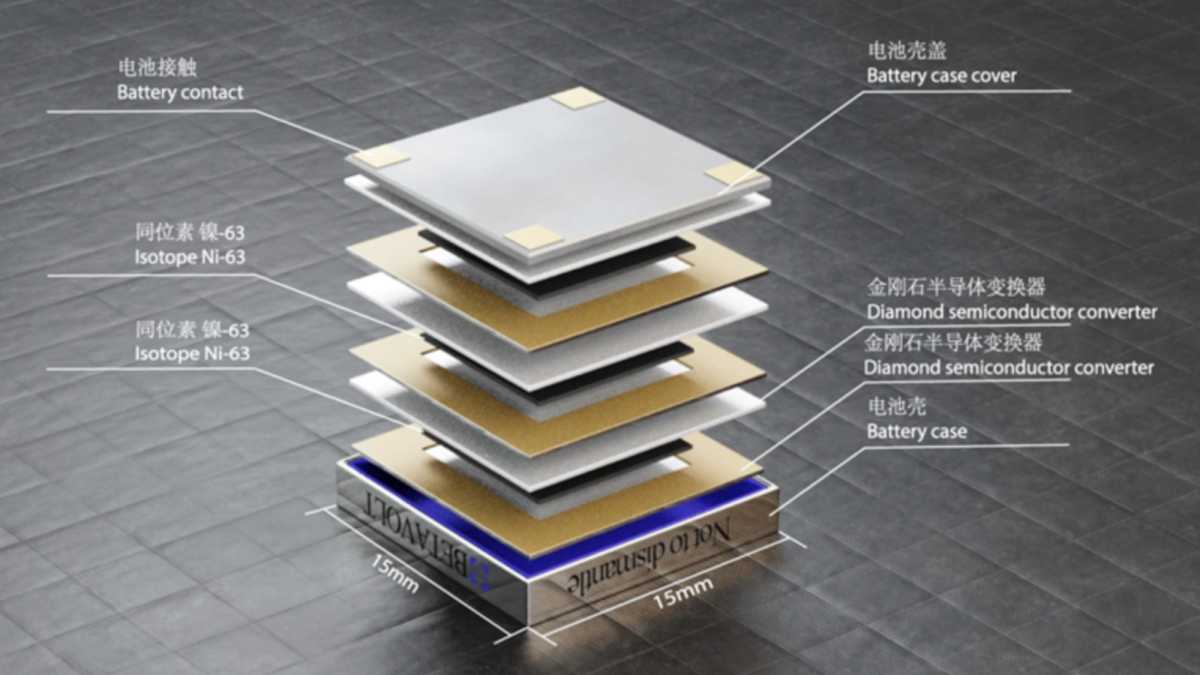
Betavolt
According to the manufacturer, the miniature atomic energy battery combines nickel-63 nuclear isotope decomposition technology and China’s first diamond semiconductor module (fourth-generation semiconductor). In this field, and in the development of miniature atomic energy batteries, China is “far ahead of European and American scientific research institutions and companies,” according to the claim. Betavolt describes the structure of its mini nuclear battery as follows:
“Betavolt’s team of scientists developed a unique single-crystal diamond semiconductor with a thickness of just 10 micrometres by placing a 2-micrometre-thick nickel-63 film between two diamond semiconductor converters. The decay energy of the radioactive source is converted into electric current, which forms a self-contained unit. Core batteries are modular and can consist of dozens or hundreds of independent unit modules and can be used in series and parallel, allowing battery products of different sizes and capacities to be manufactured.”
Betavolt still needs to increase the performance of its mini nuclear battery to, say, provide a mobile phone with a permanent power supply. Betavolt’s first ready-to-use battery is the 15mm x 15mm x 5mm BV100, with an output of 100 microwatts and a voltage of 3 volts. This will be followed in 2025 by a mini nuclear battery with an output of 1 watt. The batteries can be connected in series and in parallel.
More on nuclear batteries
Nuclear batteries, also known as radionuclide batteries, have been around for a long time and are by no means a Chinese invention. Back in 2019, Russian researchers reported a breakthrough in nuclear mini-batteries with a 50-year service life. Small nuclear batteries have been used in space travel since the 1960s, and there were even nuclear-powered pacemakers in the 1970s.
These nuclear batteries obtain their energy from the radioactive decay of Ni-63, but unlike conventional radionuclide generators, the energy is not obtained from the heat generated during radioactive decay. Instead, the beta radiation of Ni-63 is converted directly into electrical energy with a diamond semiconductor. Over the years and decades, however, the amount of emitted energy decreases. In addition, such a battery can supply comparatively little energy.
Due to the use of radioactive material, the use of this energy generation method in everyday devices—such as mobile phones—is unlikely in the longer term. It’s also important to note that this method does NOT result in a dangerous chain reaction, as is the case with a nuclear reactor.




















![T-Mobile says it didn't compromise its values to get FCC to approve fiber deal [UPDATED]](https://m-cdn.phonearena.com/images/article/169088-two/T-Mobile-says-it-didnt-compromise-its-values-to-get-FCC-to-approve-fiber-deal-UPDATED.jpg?#)
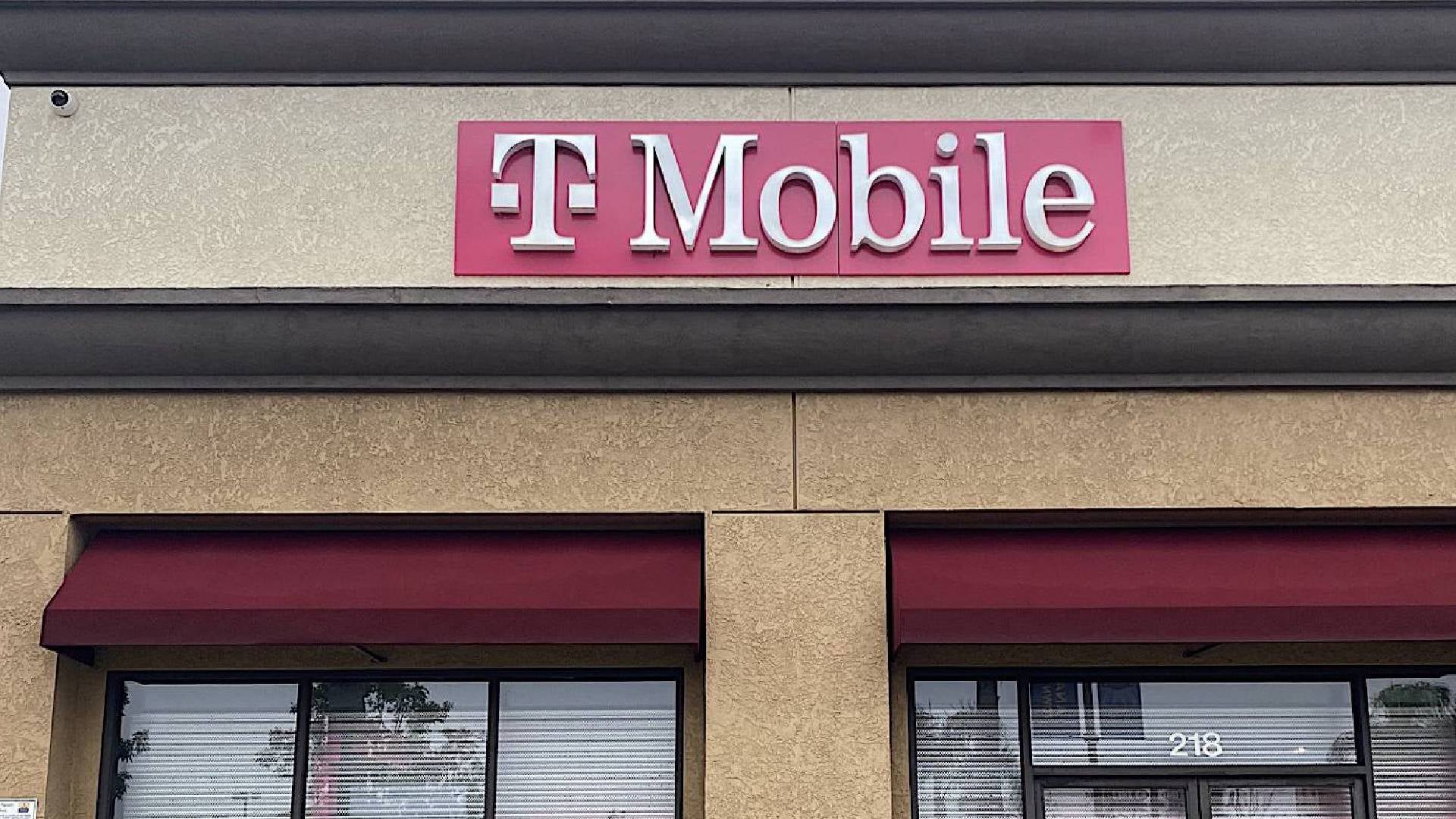























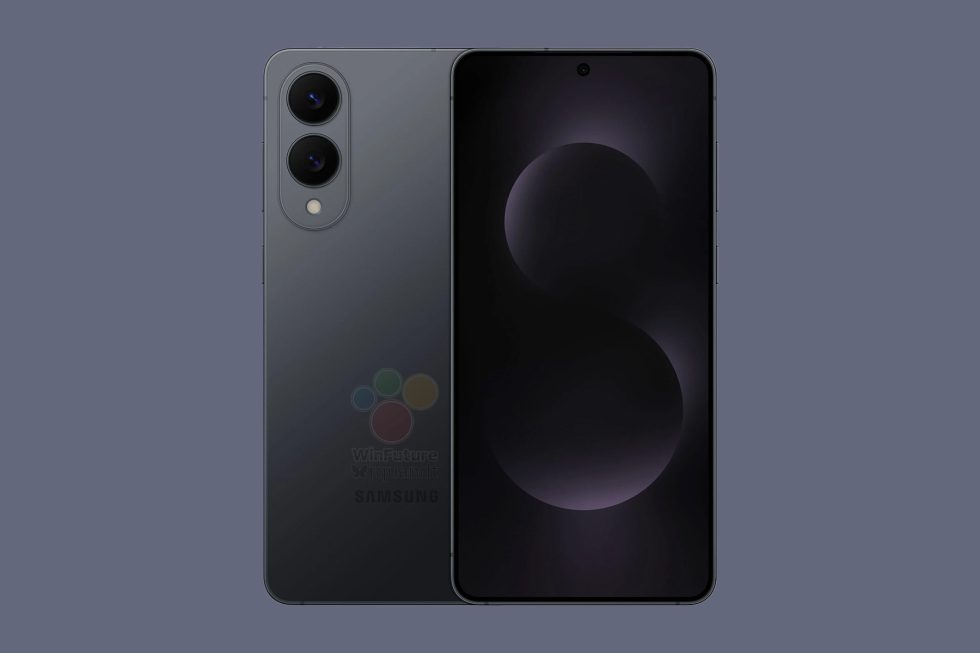








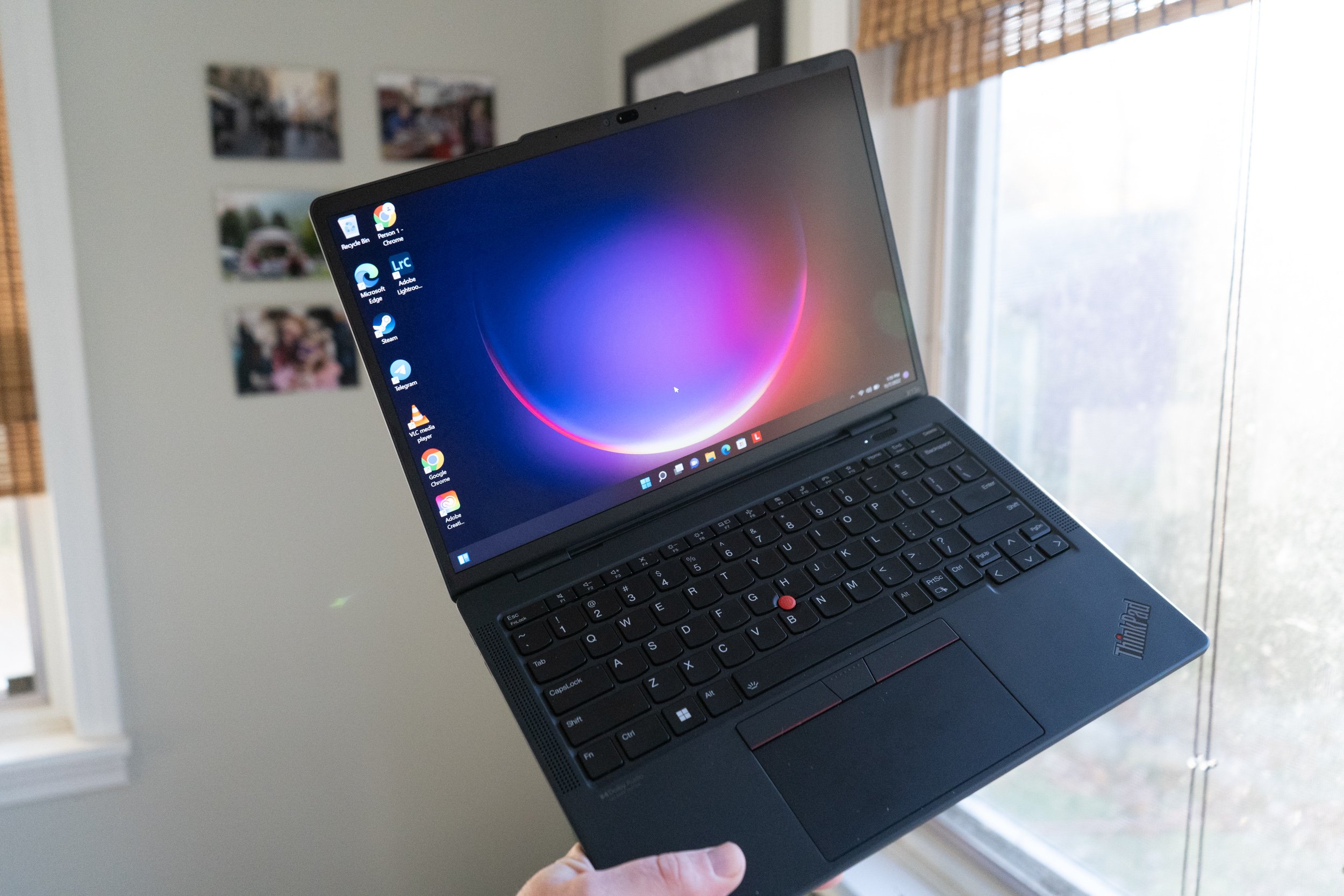










![Nomad Goods Launches 15% Sitewide Sale for 48 Hours Only [Deal]](https://www.iclarified.com/images/news/96899/96899/96899-640.jpg)


![Apple Watch Series 10 Prototype with Mystery Sensor Surfaces [Images]](https://www.iclarified.com/images/news/96892/96892/96892-640.jpg)

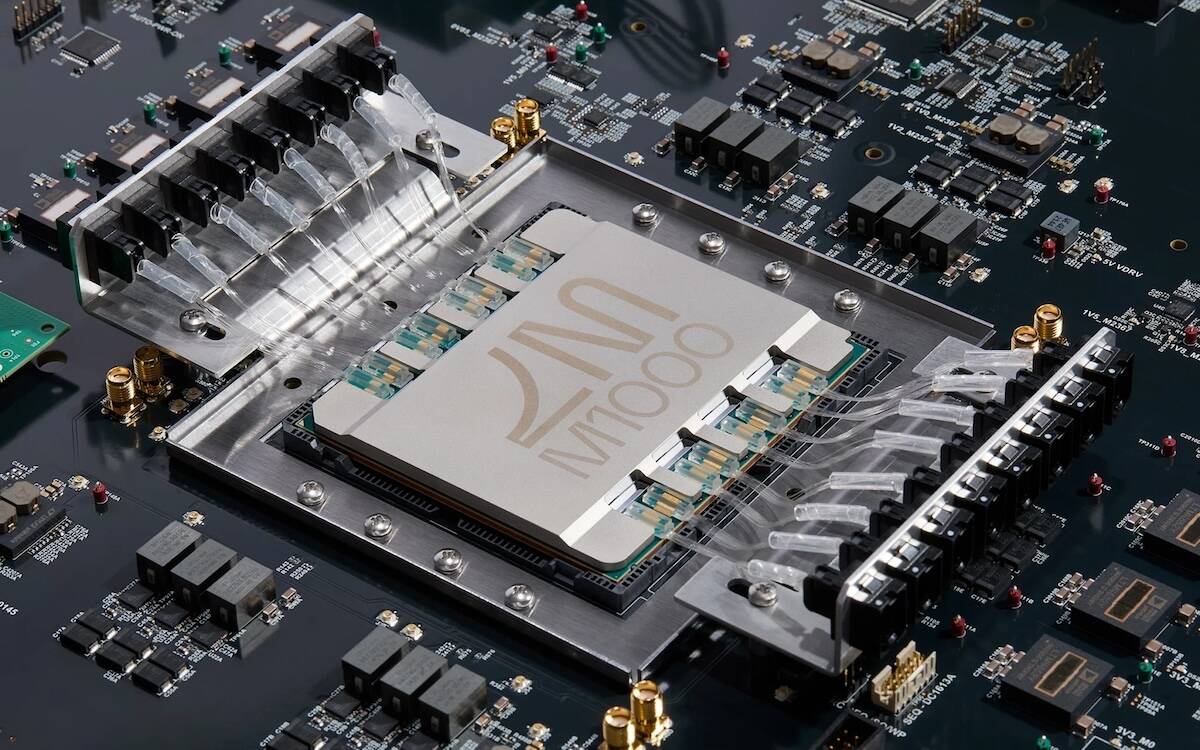

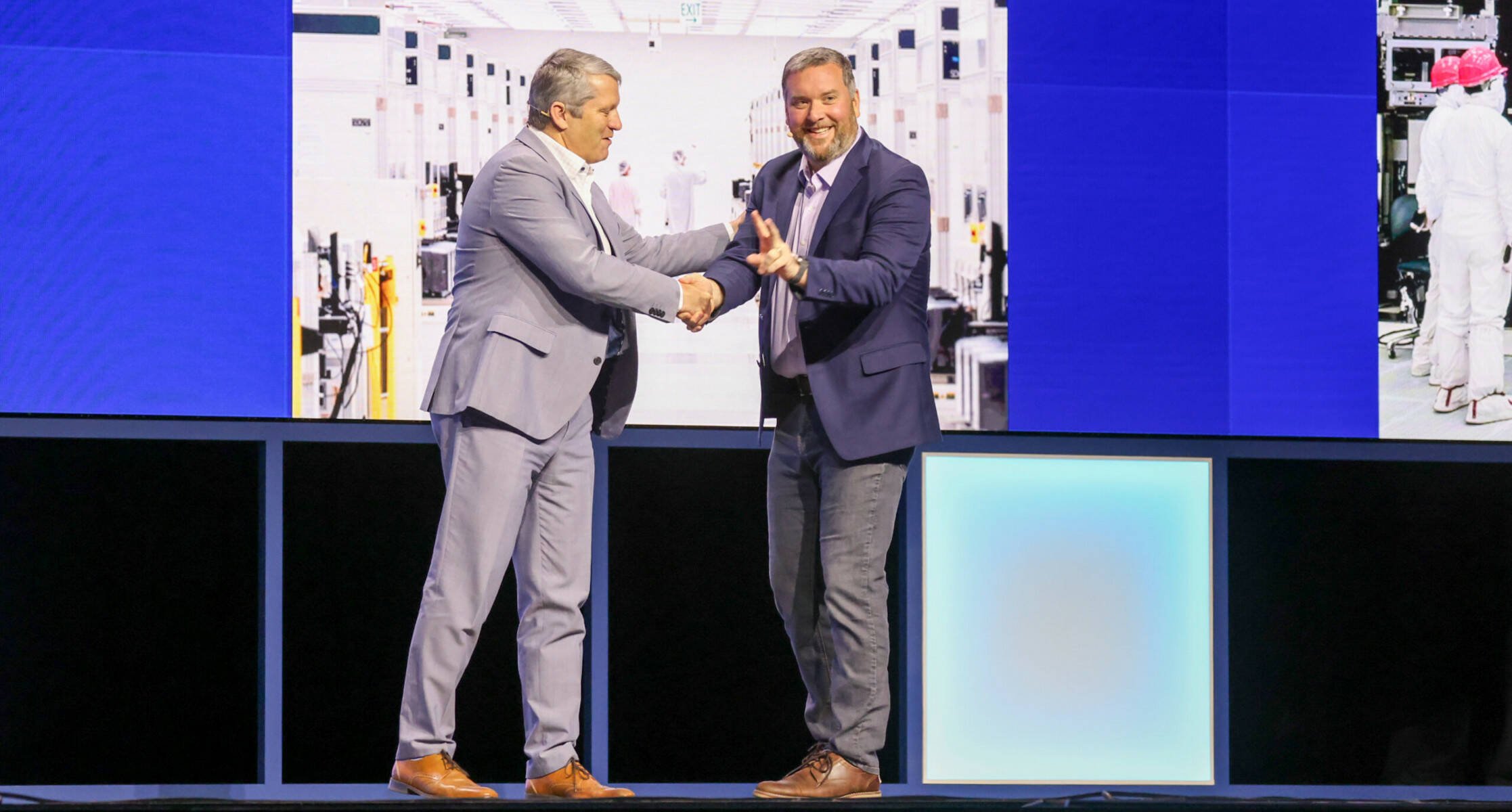














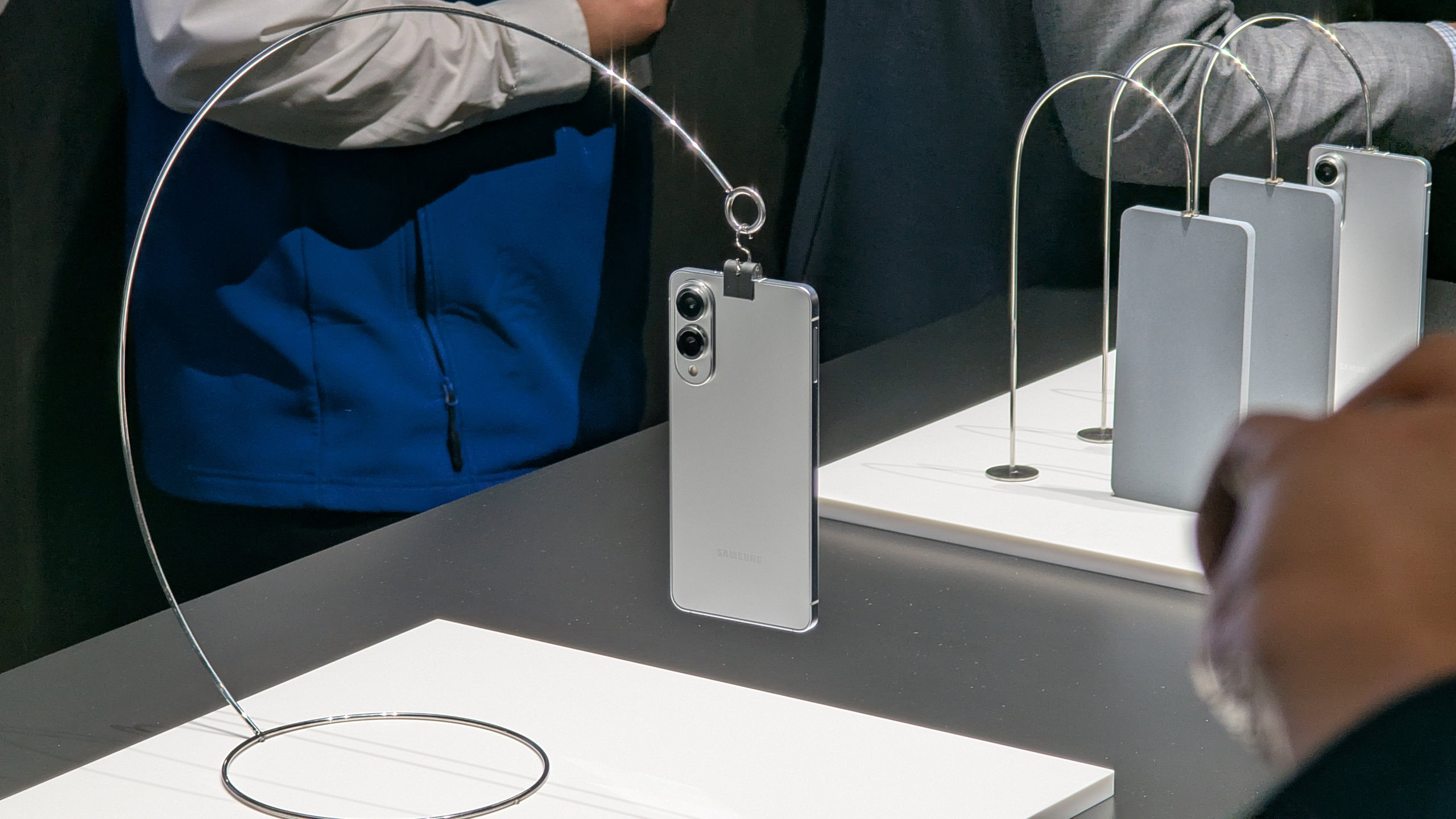
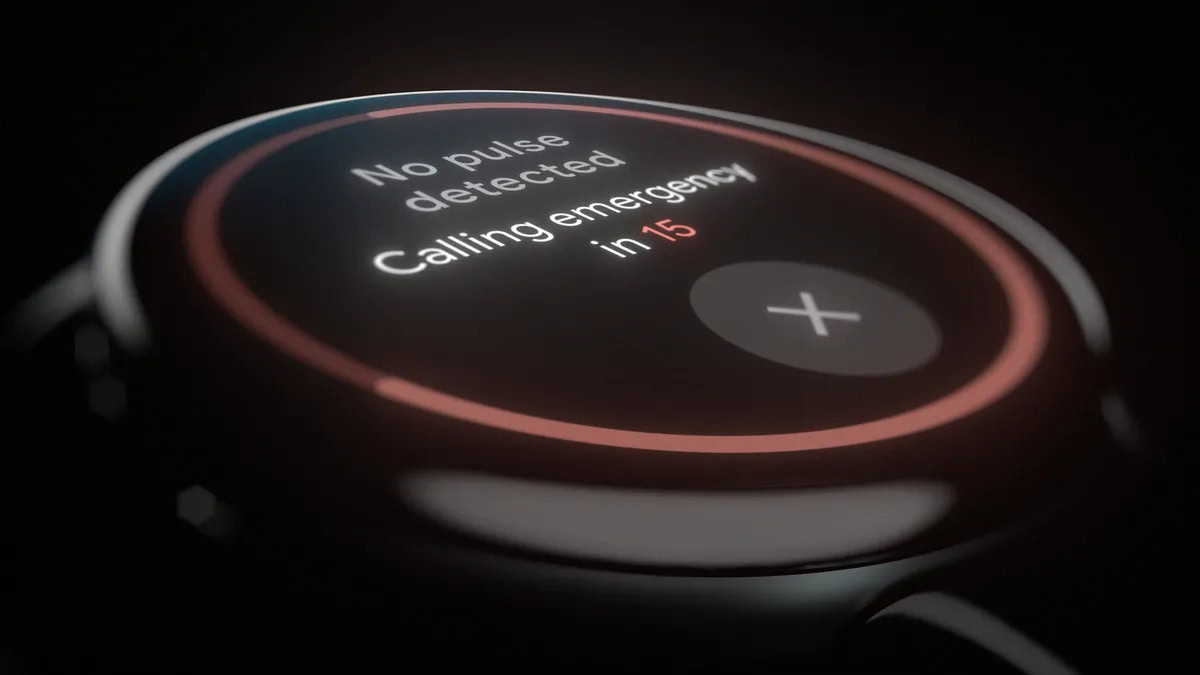
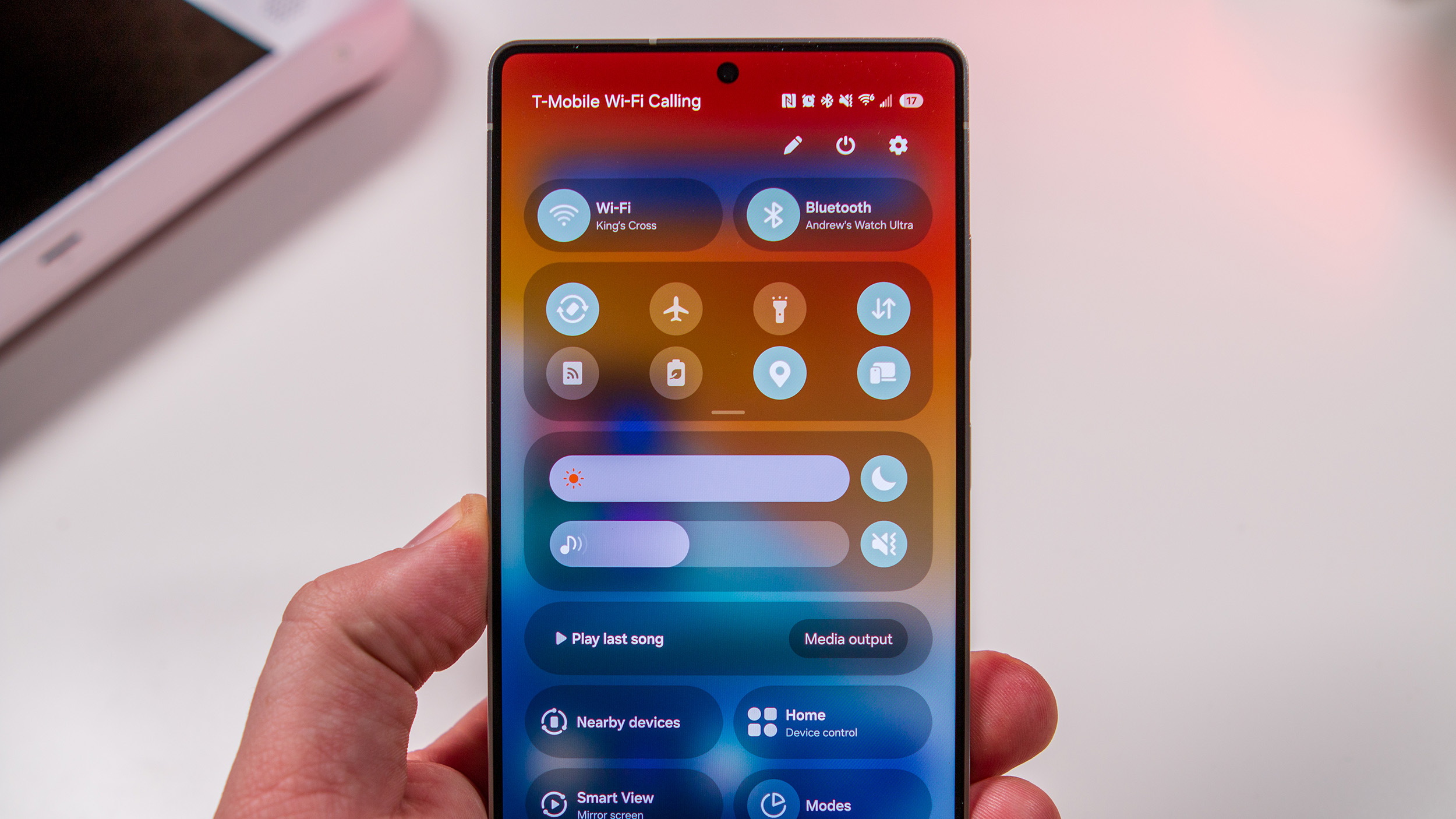
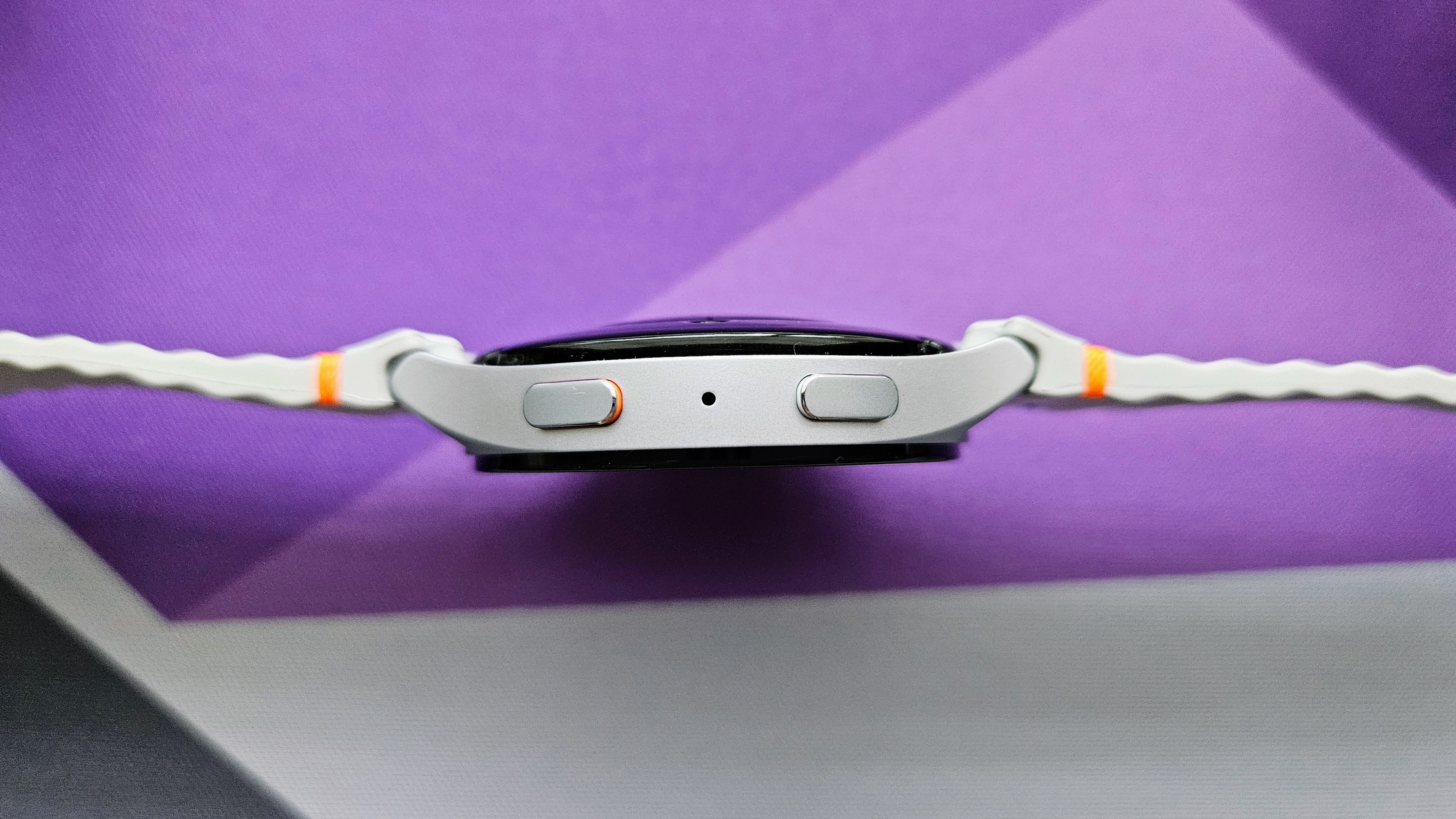



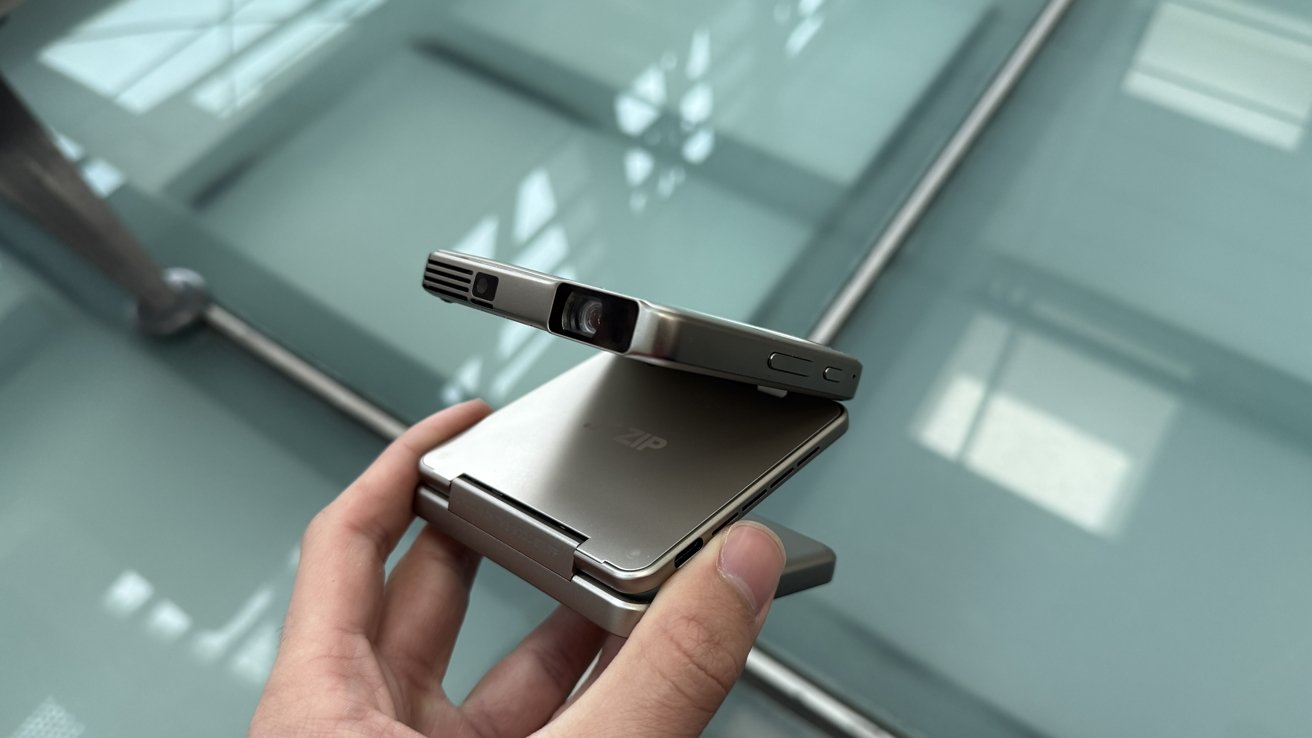

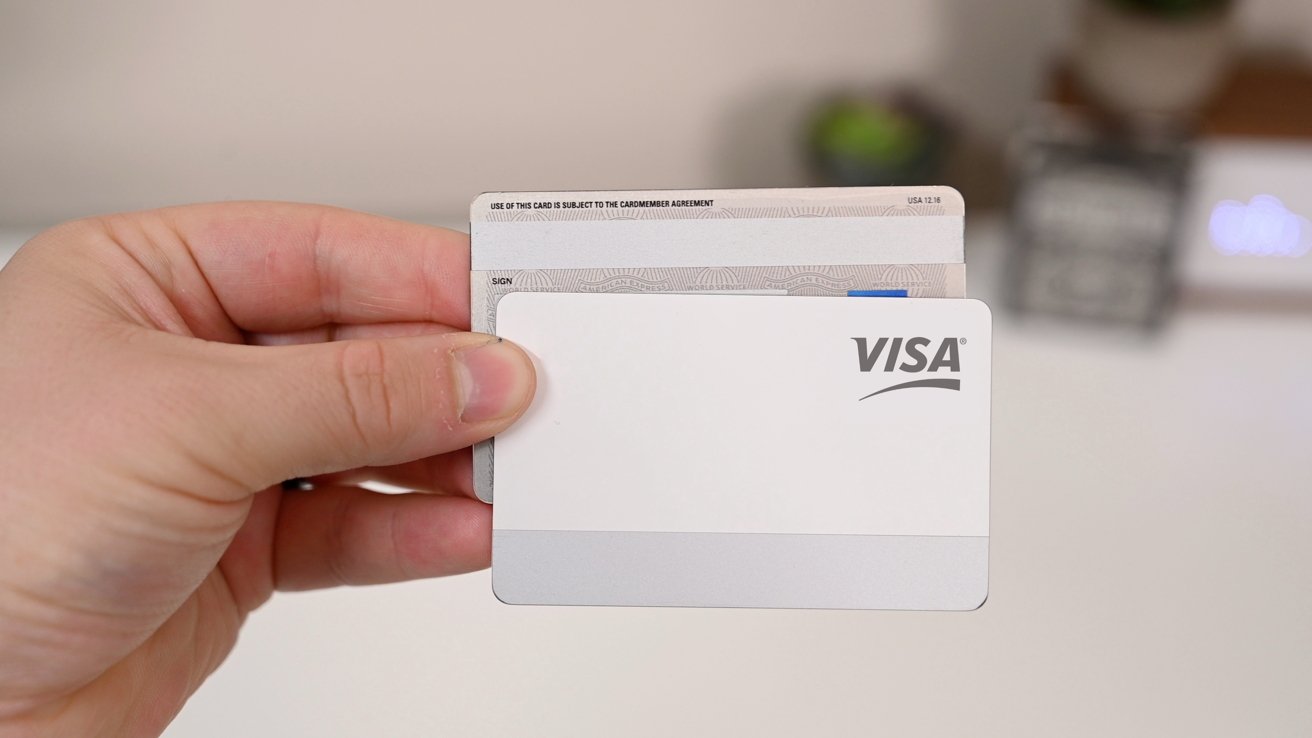
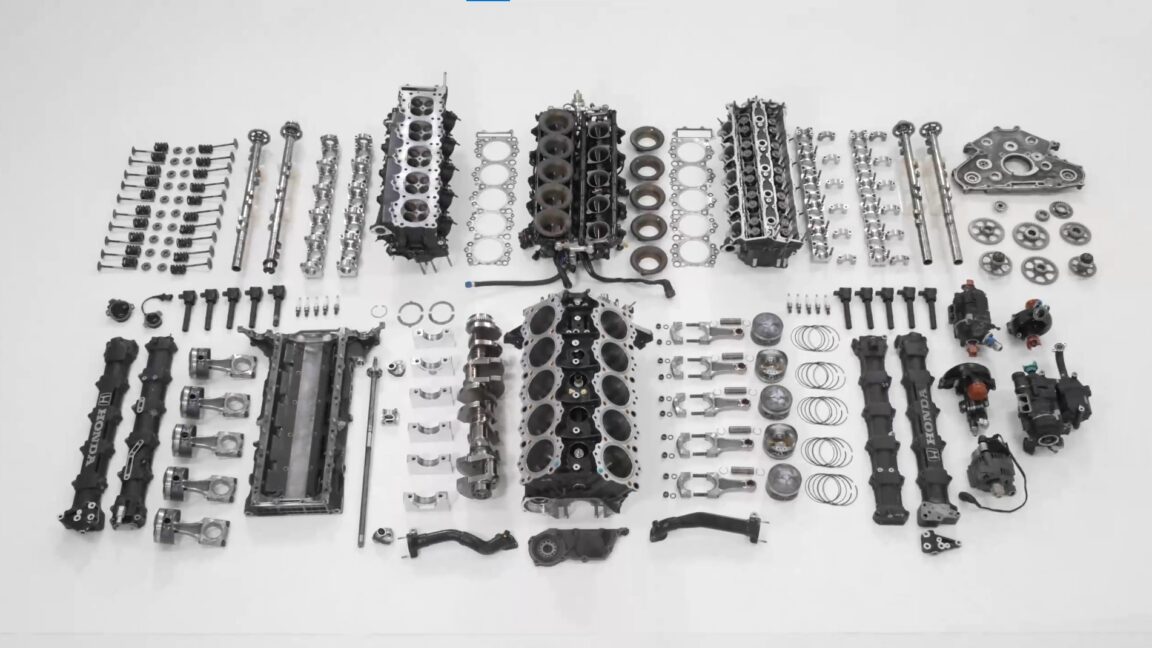



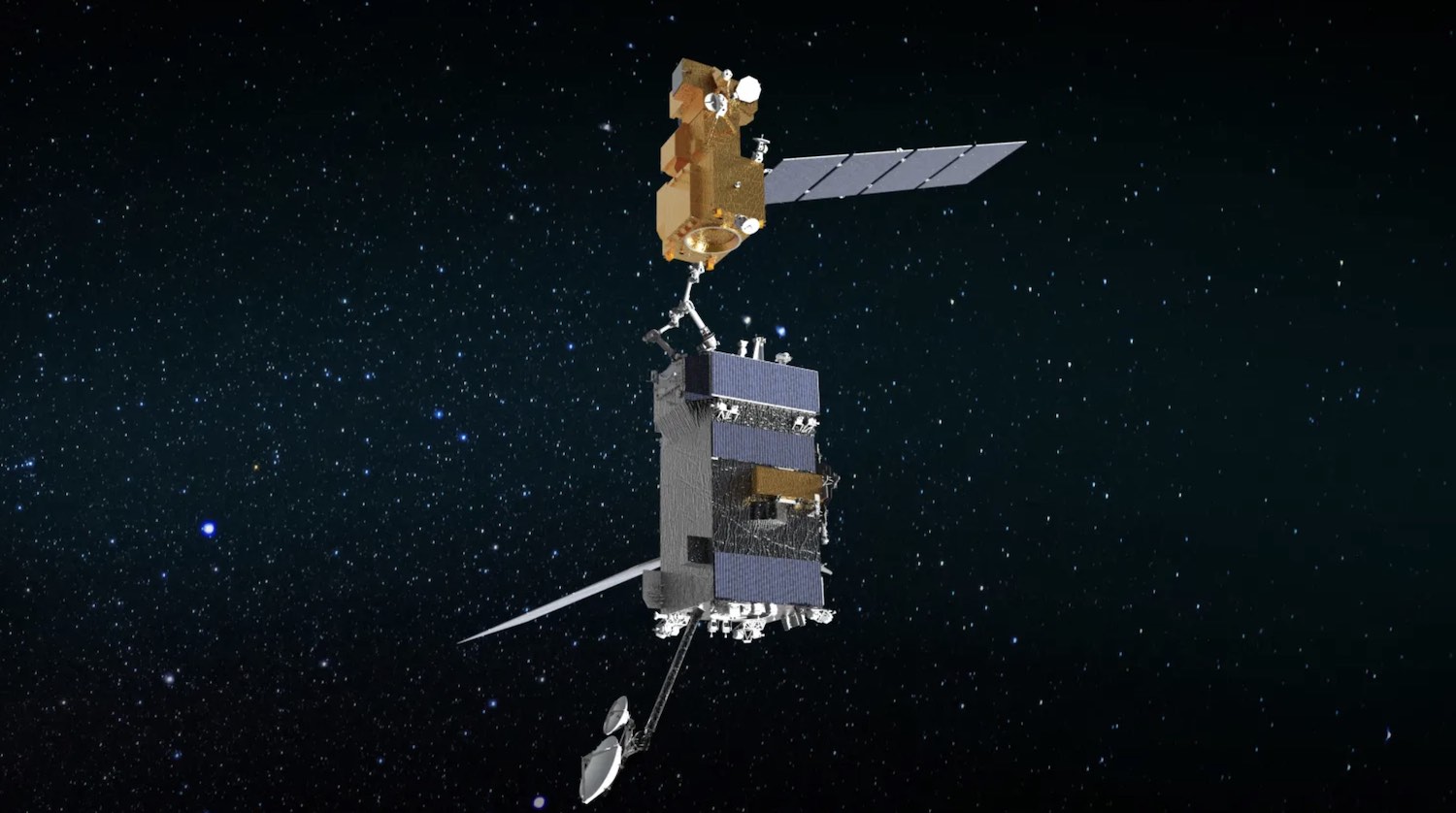




















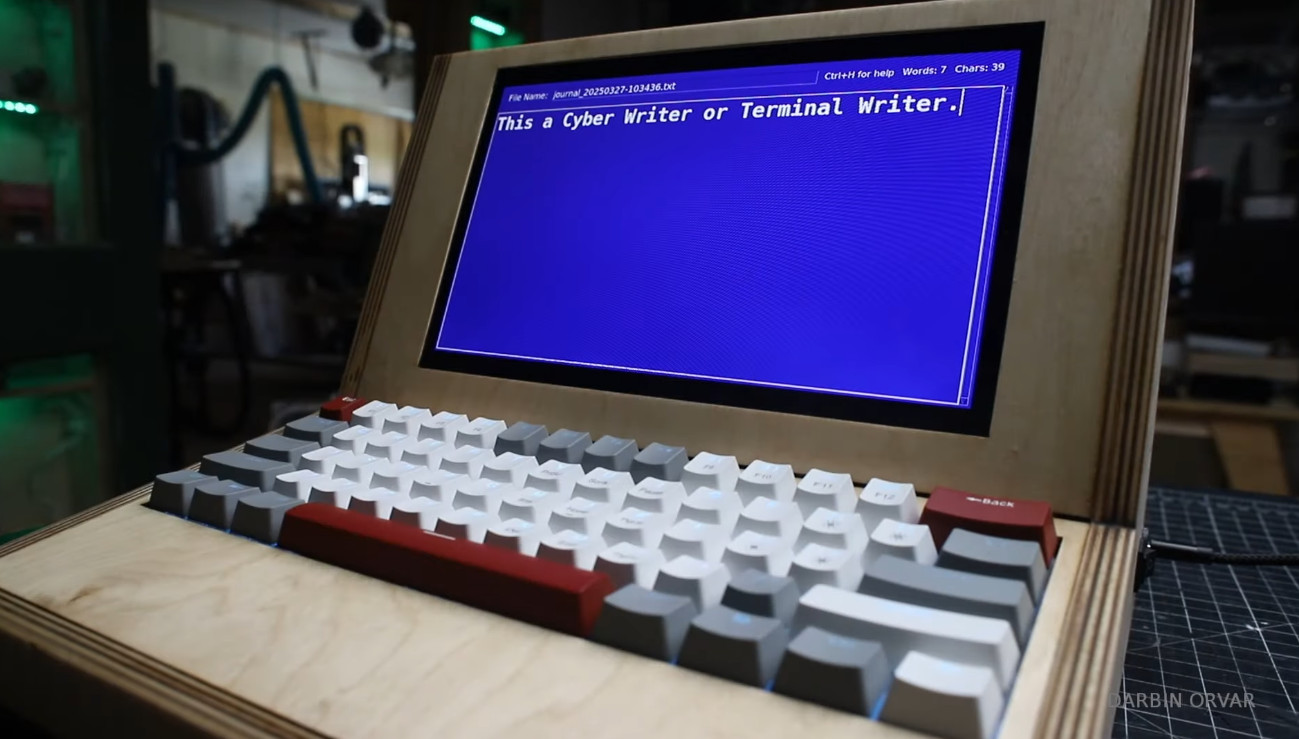

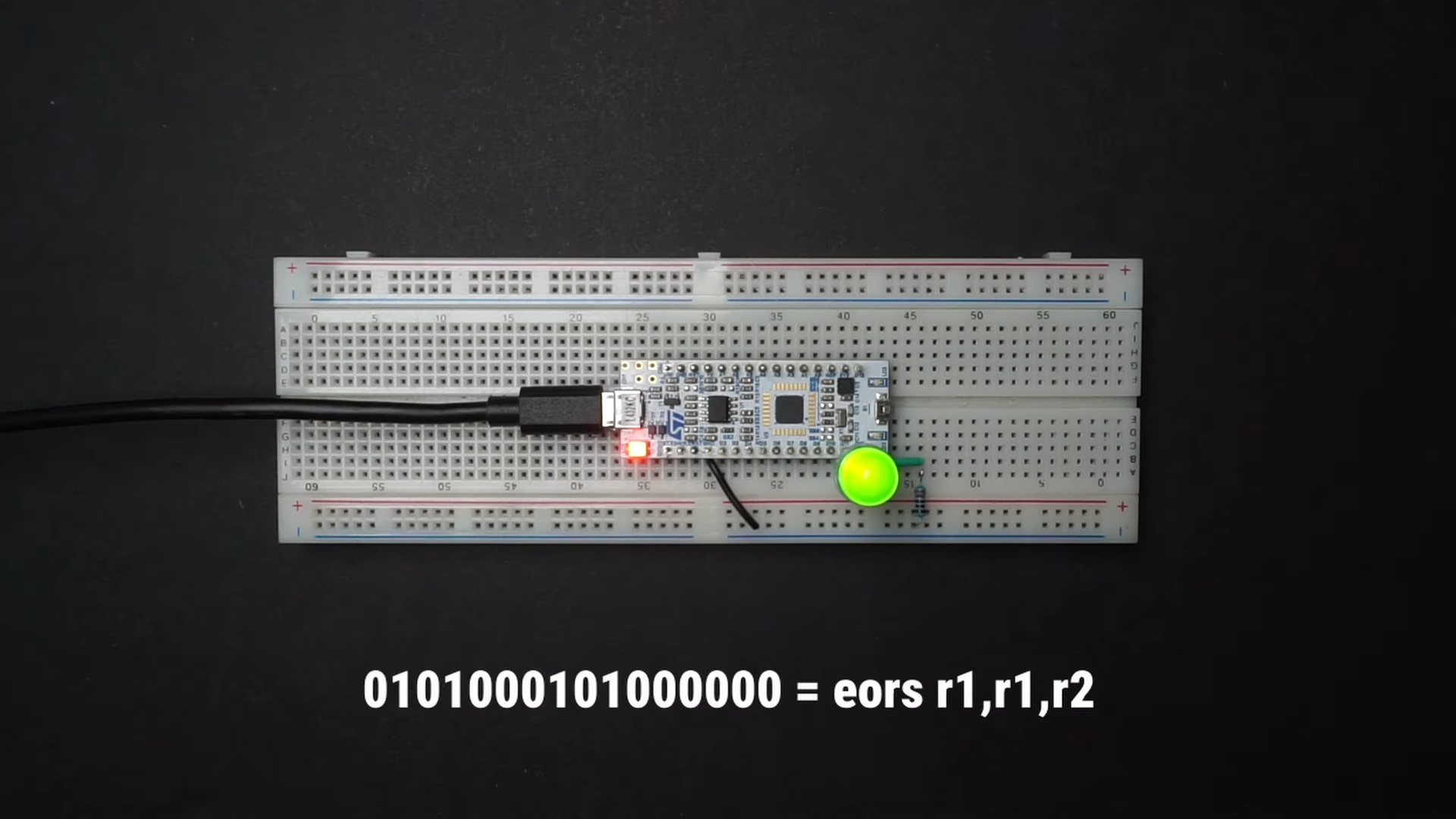





























































































































![[The AI Show Episode 142]: ChatGPT’s New Image Generator, Studio Ghibli Craze and Backlash, Gemini 2.5, OpenAI Academy, 4o Updates, Vibe Marketing & xAI Acquires X](https://www.marketingaiinstitute.com/hubfs/ep%20142%20cover.png)






















































































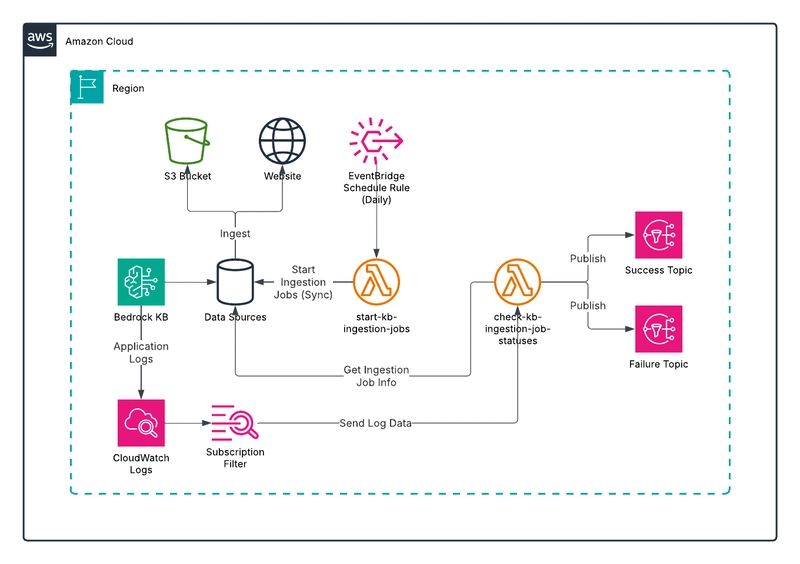






















![Is this a suitable approach to architect a flutter app? [closed]](https://i.sstatic.net/4hMHGb1L.png)


















![From broke musician to working dev. How college drop-out Ryan Furrer taught himself to code [Podcast #166]](https://cdn.hashnode.com/res/hashnode/image/upload/v1743189826063/2080cde4-6fc0-46fb-b98d-b3d59841e8c4.png?#)






























































































